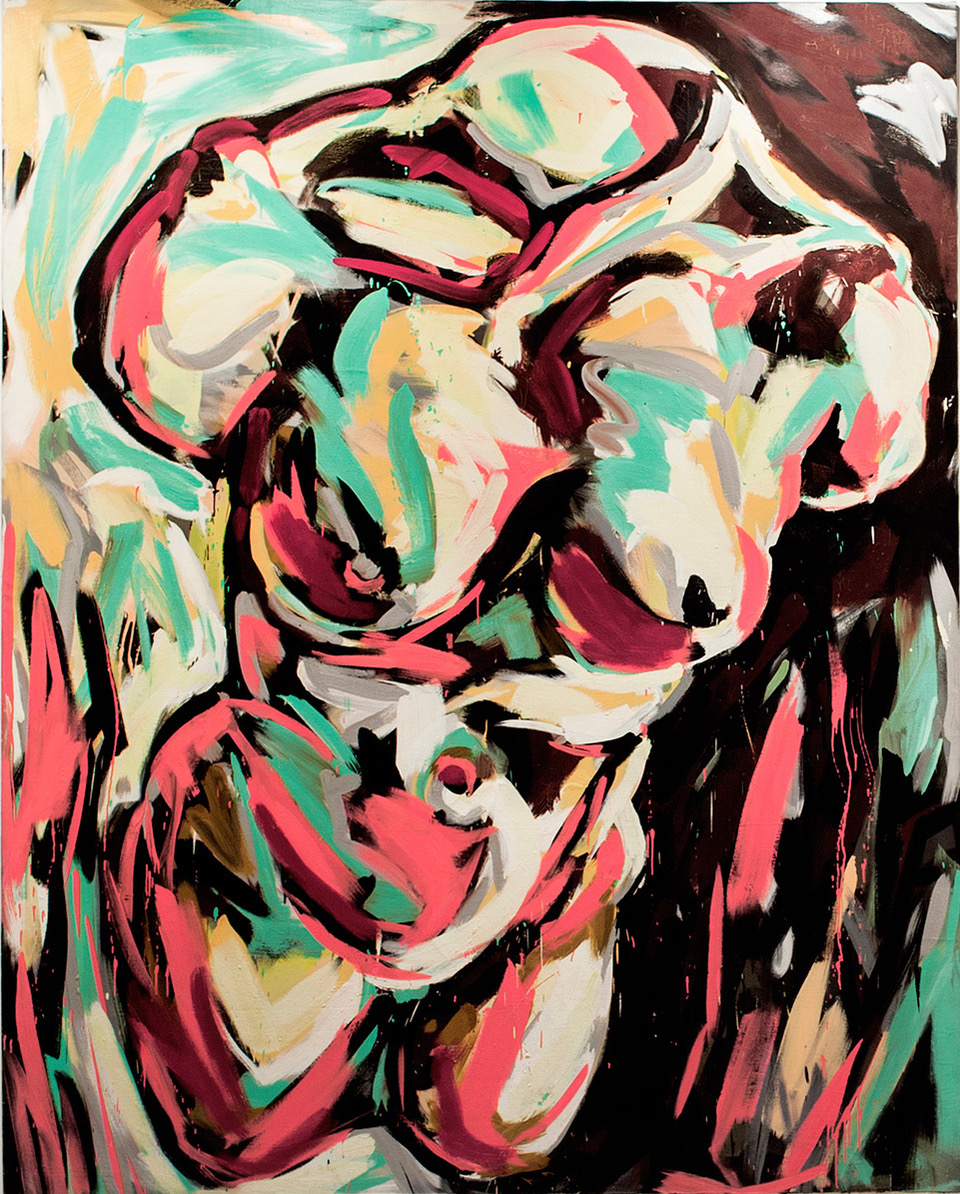Born in Buenos Aires in 1944, he studied architecture before moving to the US in 1972 to work as a research fellow at M.I.T at Cambridge, Mass., where he collaborated with John Cage and Marianne Amacher among others. In 1976 he relocated to New York with Russel Sharon, where he lived and worked until his death from an AIDS- related illness in 1990.
Frangella’s initial approach to art was conceptual: through painting he examined questions of light, perspective, and color. He was awarded the Guggenheim Fellowship in 1982 where he started to develop his more expansive and expressive style becoming a pivotal figure in the East Village, collaborating and shaping the scene with David Wojnarowicz, among others. In 1983, invited by Wojnarowicz and Mike Bidlo Frangella painted huge murals of processions of huge totemic torsos on an abandoned industrial site on Pier 34 at Hudson River documented and portayed by Peter Hujar and Andreas Sterzing among others. He helped organize the first exhibitions in Limbo Lounge, and exhibited regularly at Civilian Warfare Gallery. Frangella also painted murals throughout the city, including on construction site barriers, in abandoned piers, and in nightclubs such as the Pyramid Club, Mudd Club, and Danceteria. He was known for gathering and cooking for artists at his home in the Lower East Side after openings.
In his lifetime he had reviews from all major art magazines and newspapers of the time including Artforum, Village Voice, East Village Eye and The New York Times, championed mainly by East Village insider critics Walter Robinson and Carlo McCormik. He was highly respected, admired and looked up to by his peers due to his masterly painting talent and his collaborative spirit.


 Frangella Luis
Frangella Luis